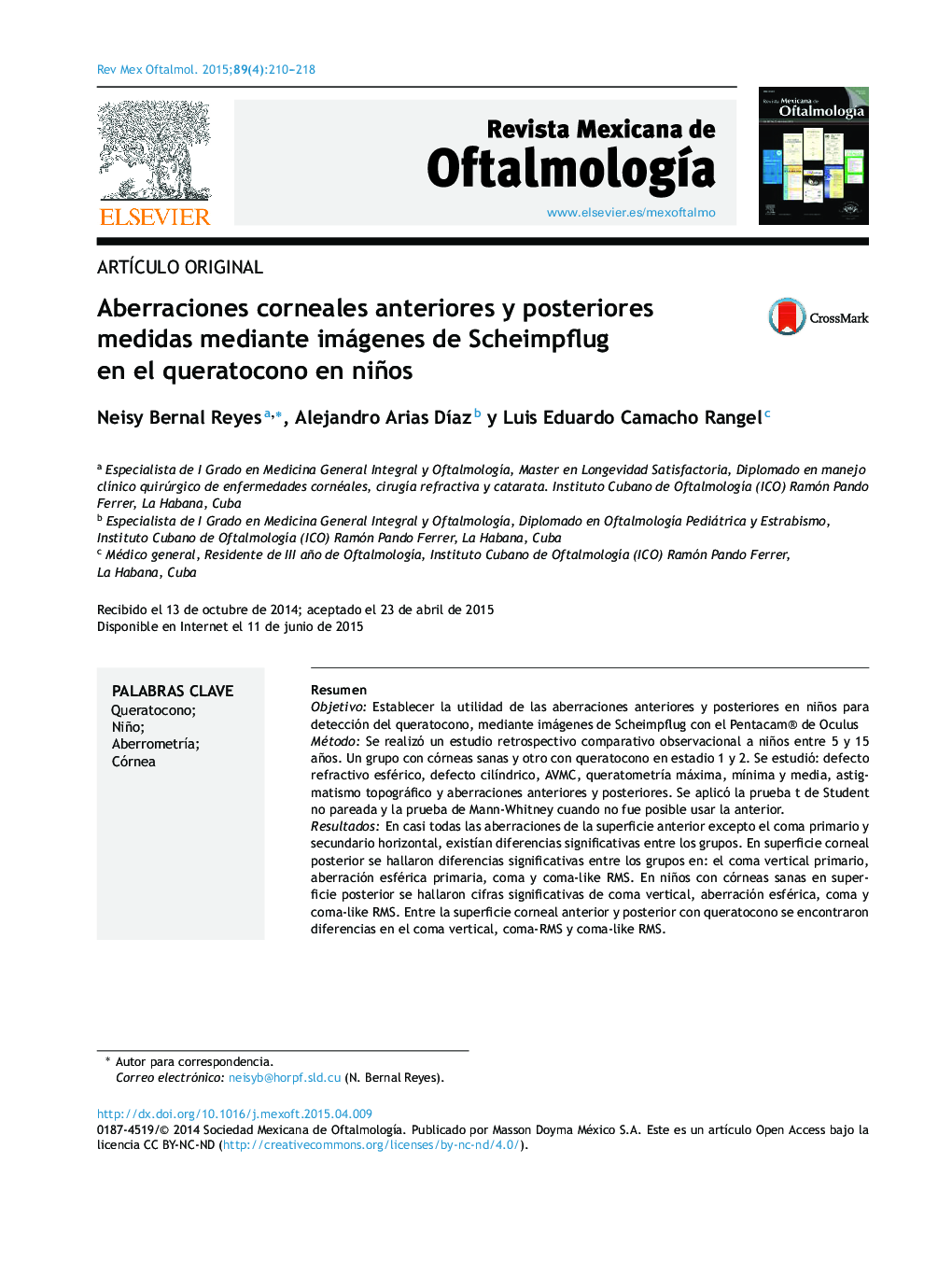| Article ID | Journal | Published Year | Pages | File Type |
|---|---|---|---|---|
| 4032348 | Revista Mexicana de Oftalmología | 2015 | 9 Pages |
ResumenObjetivoEstablecer la utilidad de las aberraciones anteriores y posteriores en niños para detección del queratocono, mediante imágenes de Scheimpflug con el Pentacam® de OculusMétodoSe realizó un estudio retrospectivo comparativo observacional a niños entre 5 y 15 años. Un grupo con córneas sanas y otro con queratocono en estadio 1 y 2. Se estudió: defecto refractivo esférico, defecto cilíndrico, AVMC, queratometría máxima, mínima y media, astigmatismo topográfico y aberraciones anteriores y posteriores. Se aplicó la prueba t de Student no pareada y la prueba de Mann-Whitney cuando no fue posible usar la anterior.ResultadosEn casi todas las aberraciones de la superficie anterior excepto el coma primario y secundario horizontal, existían diferencias significativas entre los grupos. En superficie corneal posterior se hallaron diferencias significativas entre los grupos en: el coma vertical primario, aberración esférica primaria, coma y coma-like RMS. En niños con córneas sanas en superficie posterior se hallaron cifras significativas de coma vertical, aberración esférica, coma y coma-like RMS. Entre la superficie corneal anterior y posterior con queratocono se encontraron diferencias en el coma vertical, coma-RMS y coma-like RMS.ConclusionesLas mediciones de las aberraciones de la superficie anterior medidas por imágenes de Sheimpflug son útiles en la detección precoz de queratocono en niños. Las aberraciones de superficie posterior corneal no son útiles ya que no están acordes a las propiedades ópticas de la córnea.
ObjectiveIdentify utility of anterior and posterior aberrations in children to differentiate healthy and keratoconus corneas by Scheimpflug imaging with the Oculus Pentacam®.MethodA retrospective comparative observational study of children between 5 and 15 years was conducted. A group with healthy corneas and another group with keratoconus stage 1 and 2. All patients were examined including Scheimpflug's images. Were studied the following variables: spherical refractive defect, cylindrical defect, BCVA, keratometry maximum, Minimum and medium, topographic astigmatism and anterior and posterior aberrations. Student t-test and unpaired Mann-Whitney test was used.ResultsAlmost all aberrations of the anterior surface except the primary and secondary horizontal coma were founded that significant differences between the groups exists. Primary vertical coma, primary spherical aberration, coma and coma-like RMS: posterior corneal surface significant differences between groups were found. In children with healthy corneas was found that in back surface vertical coma, spherical aberration, coma and coma-like RMS frequently. In the keratoconus between the anterior and posterior corneal surface exits significant differences in vertical coma, coma-RMS and coma-like RMS.ConclusionsThe measurements of the aberrations of the anterior surface Sheimpflug imaging measures are useful in early detection of keratoconus in children. The posterior corneal surface aberrations are not useful since they are not in accordance with the optical properties of the cornea.
